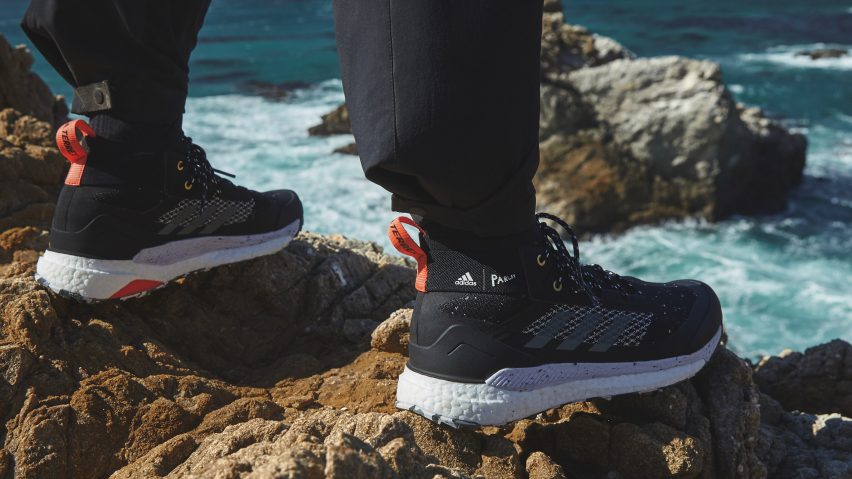Sportswear brand Adidas has once again teamed up with environmental initiative Parley for the Oceans to release an updated version of its Terrex hiking boot, which is made using recycled ocean plastic.
The Terrex Free Hiker Parley utilises a yarn that was specially developed by the non-profit Parley for the Oceans organisation from Ocean Plastic, a trademarked name for waste plastic gathered from shorelines and coastal areas.
The Terrex Free Hiker Parley has a water-repellent upper woven with the Parley Ocean Plastic yarn. The sock-like fit of the Primeknit upper is designed to stretch and adapt to all foot shapes.
The shoe also uses the brand's Boost midsole, which is made from a rubbery material injected with air to create bubbles that are melded together to form a springy surface.
"We believe that through sport, we have the power to change lives and our latest shoe in the Terrex collection does just that," said Adidas Outdoor general manager, Tim Janaway.
"The Terrex Free Hiker Parley represents both sustainability and performance, empowering you to get outside and challenge yourself, without challenging the environment."
Parley's Ocean Plastic material is made using marine plastic debris that can replace virgin plastic in the process of manufacturing various products.
The plastic is collected from remote islands, beaches and coastal communities. It is then shredded and reworked to become a high-performance polyester yarn suited to use in sportswear.
The long-distance hiking shoe is the first from Adidas' Terrex Free Hiker range to be made using the Parley Ocean Plastic yarn, which the company first used for a running shoe developed by British designer Alexander Taylor in 2015.
Since then, Adidas and Parley have worked together on a collection of swimwear, an updated version of a classic 1990s shoe, football kits for Manchester United and Real Madrid, and a trainer designed by Stella McCartney.
In a 2019 interview with Dezeen, Parley for the Oceans founder Cyrill Gutsch said he no longer believes that eliminating plastic from the seas is possible and that we should instead focus on creating non-harmful alternatives.
The organisation previously worked with Spanish designer Adolfo Correa on a Hawaiian shirt covered in images of plastic spoiling the oceans, and launched a collection of sunglasses made from waste plastic to help fund an ocean clean-up programme.
Artist Doug Aitken also created an underwater installation for the organisation featuring three mirrored geodesic domes anchored to the seabed that people could swim into.

